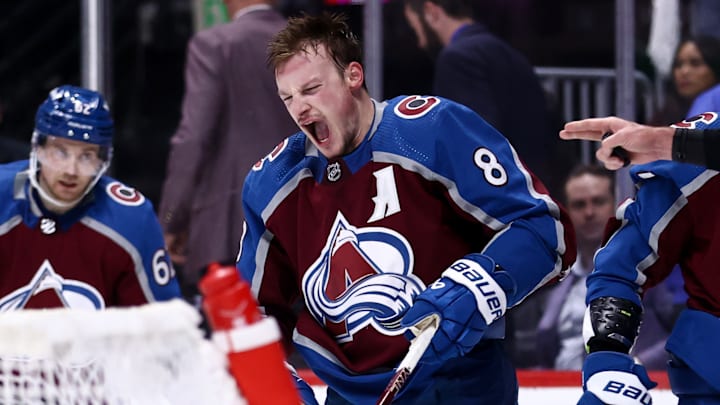Ways the Colorado Avalanche could remain cap compliant
Again, we’re dealing with the assumption that both Landeskog and Nichushkin return. Please bear in mind that if either one returns, the Avs should have an issue.
Let me explain.
If Nichushkin returns, his $6 million cap hit would blow past the cap ceiling. But if the Avs place Landeskog on LTIR, the problem is solved.
If Nichushkin’s suspension is up but he doesn’t return, the Avs could place him on LTIR if he qualifies. Otherwise, the Avs may explore trading him or placing him on waivers. However, that topic is best reserved for another day.
So, getting back to Landeskog and Nichushkin on the ice. That’s roughly $4 million over the cap. The Avs would need to clear space. There are two main ways to do it.
First, the Avs don’t dress a full team. For instance, the Avs could dress 18 or 19 players instead of 20. Similarly, the Avs could send someone down to the AHL. But doing so could prove tricky.
According to PuckPedia, the only players who are waiver-exempt are Nikolai Kovalenko, Chris Wagner, and Jacob MacDonald. Anyone else who gets sent down to the AHL would have to clear waivers, meaning the Avs could lose that player for nothing.
The Avs could explore such a situation, for example, if the club waives someone like Oliver Kylington. If Kylington gets picked up, the Avs rid themselves of his cap hit. But if he clears, he goes down to the AHL but his cap hit remains on the books.
At that point, the other alternative would be to trade someone. That’s where things can become extremely complex. The Avalanche would need to move a player whose cap hit offsets the amount over the cap.
Alternatively, multiple players with lower cap hits could be moved. But who? I won’t get into specific names as there could be an endless number of possibilities.
